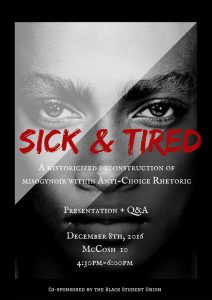https://www.nytimes.com/video/us/1247467672743/blood-journey.html
In my Junior Seminar, we had Professor Ruha Benjamin as a guest speaker to provide us insights into how to effectively carry out in-depth interviews. Professor Benjamin started off her talk by showing us a New York Times video clip on the story of the Havasupai Indians, who donated samples of their blood for diabetes research that was conducted at Arizona State University. This incident was briefly mentioned in Genetics and the Unsettled Past, but it is worth expanding on because the Havasupai’s story is an important and powerful one that is directly related to our final class unit.
The Havasupai is a community with high rates of Type II diabetes, so members were eager to find out the cause. However, university researches would end up using their blood for other forms of research outside of what they donated their blood for, which would lead the Havasupai to retrieve back their blood. In addition, the University would provide them with a $700,000 compensation.
This video shines a light on the desire for groups to understand their communities past. As we learned from our readings, such desires were and still are extremely common. Different stakeholders use this public interest in genetic understanding to exploit marginalized communities and to use their genes for their own purposes.
Moreover, culture plays a huge role in this instance. As mentioned in the video, blood is extremely sacred to the Havasupai. At the end, we see the Havasupai perform a type of prayer as they retrieve the blood from the University’s lab, and one of the Havasupai women is in tears when she is in the room where the blood was held.
I was curious to hear people’s thoughts on this story. I’m especially curious about people’s thoughts on the role of culture in these types of instances. In addition, I would like to hear people’s thoughts on the $700,000 compensation. In a sense, I am glad to hear that they received compensation at all, because exploited communities have historically been deprived of reparations. However, I’m also disturbed by the gesture because it seems to suggest that money is all that it takes to repair the damage created.
Looking forward to hearing people’s thoughts!

